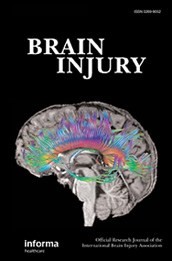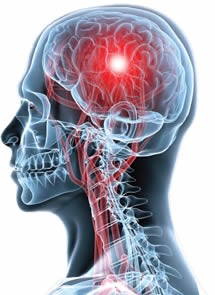 Last year I published a manuscript: “Prevalence and assessment of traumatic brain injury in prison inmates: A systematic PRISMA review” in the journal Brain Injury as part of my VC Scholarship award. This month, I was absolutely delighted when the journal Brain Injury awarded my paper the 2016 first place winner of the Henry Stonnington Award for review articles (http://www.tandfonline.com/doi/pdf/10.1080/02699050500322695).
Last year I published a manuscript: “Prevalence and assessment of traumatic brain injury in prison inmates: A systematic PRISMA review” in the journal Brain Injury as part of my VC Scholarship award. This month, I was absolutely delighted when the journal Brain Injury awarded my paper the 2016 first place winner of the Henry Stonnington Award for review articles (http://www.tandfonline.com/doi/pdf/10.1080/02699050500322695).
My review of the prevalence and assessment of brain injury in offender populations highlighted a number of key issues within the area. Some of the studies identified in this review touch on the issue of traumatic brain injury (TBI) being largely unrecognised and that, within the criminal justice system, it is a ‘hidden disability’. The studies identified in my review clearly supported the need for screening for TBI within the criminal justice system (at any stage such as: during parole, court diversion or while the individual is in a correctional programme). Currently, TBI receives no medical attention in a large number of cases and, therefore, access to medical records to determine history of TBI is, largely, of no ‘diagnostic’ use. In order to address this issue in the assessment of TBI, the Ohio State University developed The Ohio State University  (OSU) Traumatic Brain Injury (TBI) Identification Method (OSU-TBI-ID) (See: http://ohiovalley.org/tbi-id-method/). One study highlights the clinical utility of the OSU-TBI-ID in identifying TBI in inmates and advocates that it can be easily incorporated and combined with existing screening instruments.
(OSU) Traumatic Brain Injury (TBI) Identification Method (OSU-TBI-ID) (See: http://ohiovalley.org/tbi-id-method/). One study highlights the clinical utility of the OSU-TBI-ID in identifying TBI in inmates and advocates that it can be easily incorporated and combined with existing screening instruments.
In terms of the implication for further research and practice, the studies identified in my review clearly emphasise the need to account for TBI in managing care in offender populations, which may contribute to reduction in offending behaviours. Despite studies highlighting the significant prevalence of TBI in inmates, there has been little consideration of this in the development of policies and procedures. A review, conducted in the UK and published in 2009, exploring the mental health needs of prisoners made no reference to TBI. In prison populations TBI remains inadequately addressed. Further understanding and recognition of the prevalence of TBI in inmates and its psychiatric associations is necessary in order to inform TBI-specific prison rehabilitation programmes.
For link to the review article in Brain Injury see: http://www.tandfonline.com/doi/abs/10.1080/02699052.2016.1191674?journalCode=ibij20